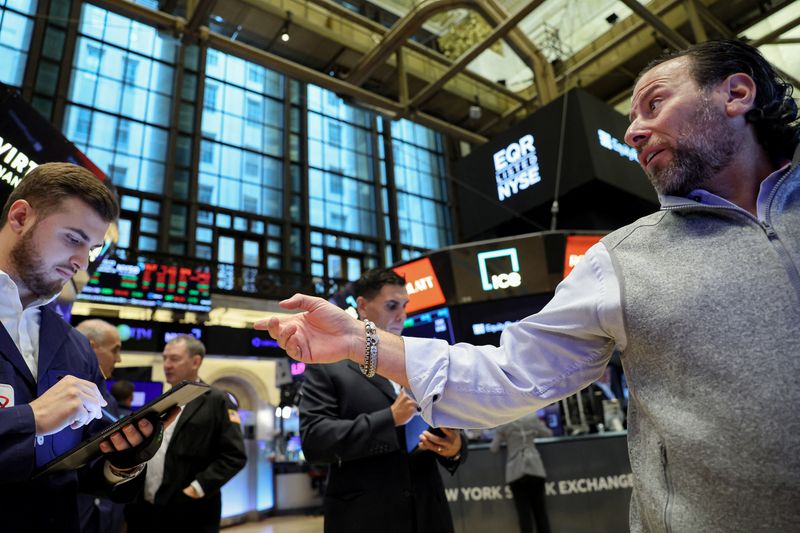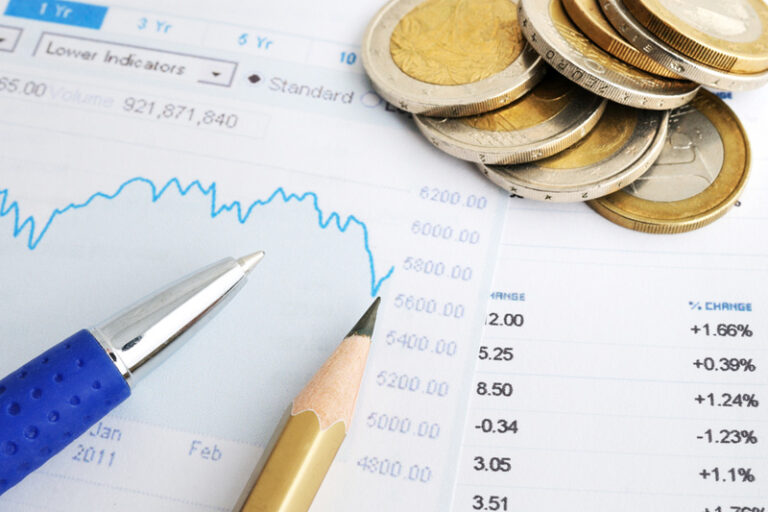
© Reuters. FILE PHOTO:Traders work on the floor of the New York Stock Exchange (NYSE) in New York City, U.S., September 28, 2023. REUTERS/Brendan McDermid/File Photo
By Shashwat Chauhan and Shristi Achar A
(Reuters) – U.S. stocks rose on Friday after a softer-than-expected reading on a crucial inflation metric kept alive hopes of a pause in the Federal Reserve’s rate hikes, though main indexes were on track to log quarterly declines.
A Commerce Department report showed the personal consumption expenditures (PCE) price index, considered to be the Fed’s preferred inflation gauge, climbed 0.4% in August month-on-month, against estimates of a 0.5% rise.
Excluding volatile food and energy components, the core PCE price index rose 0.1% in August month-on-month, compared with estimates of 0.2% advance.
“These are very, very good numbers. Even though the drop isn’t spectacular, it’s in the right direction,” said Kim Forrest, chief investment officer at Bokeh Capital Partners.
“I’m very optimistic that inflation continues to decline and the Fed will note this in their reasoning about interest rates.”
Traders’ bets on the benchmark rate remaining unchanged in November and December stood at 85% and 67%, respectively, according to CME’s FedWatch tool.
The yield on two-year and declined, leading growth stocks including Apple (NASDAQ:), Microsoft (NASDAQ:), Tesla (NASDAQ:), Alphabet (NASDAQ:), Amazon.com (NASDAQ:) and Nvidia (NASDAQ:) to advance between 1.3% and 3.0%.
A final reading of the September University of Michigan Consumer Sentiment Index came in at 68.1, versus expectations of 67.7.
At 10:02 a.m. ET, the was up 110.59 points, or 0.33%, at 33,776.93, the was up 32.28 points, or 0.75%, at 4,331.98, and the was up 176.48 points, or 1.34%, at 13,377.75.
Real estate led gains among the major S&P 500 sectors, rising 1.3%, while beaten-down utilities rose 1.0%
Energy was an outlier, down 0.9% after rallying over 2% so far this week.
The S&P 500 and the Nasdaq are poised for their worst monthly showing of the year amid uncertainty around interest rates. All the three indexes, including the Dow, are set for their first quarterly decline in 2023.
Riding the current of higher crude prices, energy is set to emerge as the only major S&P 500 sector to notch monthly gains. Meanwhile, rate-sensitive information technology and real estate were on track to be the worst hit.
Elsewhere, investors gauged the prospects of averting a government shutdown as the Democratic-led Senate forged ahead on Thursday with a bipartisan stopgap, while the House began voting on partisan Republican spending bills.
Traders would also lookout for JPMorgan Hedged Equity Fundas a potential source of additional volatility, as the $16 billion fund is expected to reset its options positions on Friday.
Among individual stocks, Nike (NYSE:) jumped 8.4% after the sportswear maker posted a better-than-expected first-quarter profit.
Shares of sporting goods retailers Foot Locker (NYSE:) and Dick’s Sporting Goods (NYSE:) added 4.1% and 2.1%, respectively.
Carnival (NYSE:) rose 2.2% after the cruise operator forecast a smaller annual loss than previously estimated and reported a third-quarter profit.
Advancing issues outnumbered decliners by a 3.80-to-1 ratio on the NYSE and by a 2.79-to-1 ratio on the Nasdaq.
The S&P index recorded no new 52-week high and two new lows, while the Nasdaq recorded 21 new highs and 60 new lows.


